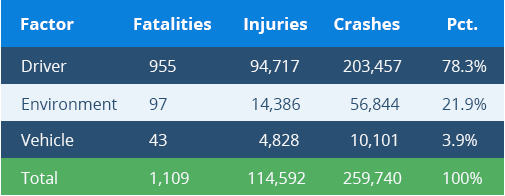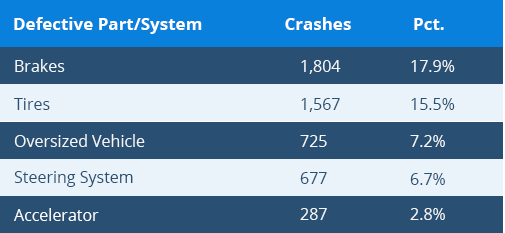General Motors engineers knew that the ignition switch in certain models of GM’s small cars had problems as early as 2001 but repeatedly decided not to do anything about it, according to recently released confidential documents.
The recall by GM has been expanded to replace defective ignition switches in 2.6 million cars. The defective ignition switches can cause cars to turn off while in motion, disabling braking, steering and airbags and causing car accidents. They have been linked to at least 13 deaths.
The recall includes all model years of the Chevrolet Cobalt, Chevrolet HHR, Saturn Ion, Saturn Sky, Pontiac G5, and Pontiac Solstice from 2003 through 2011.
According to a Reuters story, the confidential documents also show that Delphi Automotive, a parts supplier, tested the switches and determined that they did not meet GM’s specifications. The documents were released by the House Committee on Energy and Commerce, which is investigating the faulty switches.
The problem with the switches is that they don’t have enough torque to prevent them from moving from the “run” position, in which the engine is on, to the “accessory” position, in which it is turned off. The parts involved are called a detent plunger and spring, and they keep the ignition key in position when the car is running.
The documents released by Congress show that a GM engineer first realized there was a problem with the ignition switches in 2001, when he was test-driving a prototype of the 2003 Saturn Ion. An internal memo identified the problem as “low contact force and low detent plunger force.” The faulty parts were replaced with newer parts and the case was closed in November 2001.
But that wasn’t the end of the problems with the ignition switch. The GM documents show that when Delphi sent a batch of switches to GM in December 2001, it noted that many of the switches did not meet GM’s torque specifications. GM nonetheless gave the parts the green light in 2002, and the first Ion was completed in August 2002.
By 2003, GM was monitoring customer complaints about the Ion’s engine stalling but noted that “technicians are rarely able to duplicate the concern.”
In 2004, while GM was developing the Chevy Cobalt, an engineer testing the vehicle noted that “the driver’s knee bumped the key in such a manner as to turn off the ignition.” The documents show that engineers considered several remedies but ultimately concluded that the tooling cost was too high and the fix would take too long. GM engineers closed the case in 2005, saying that there was not an acceptable “business case” for the solutions.
The problems persisted. GM asked Delphi engineers to analyze the switch in 2005.
The same year, GM investigated the faulty switch and recommended giving car owners a key insert. It did not recommend redesigning the part because that would cost too much, according to the documents. In fact, one group of GM engineers discussed postponing a redesign until 2008 because of a $400,000 retooling cost, plus 90 cents per car.
GM ultimately did redesign the switch and began installing it on cars in the fall of 2007. But because the new switch carried the same part number as the old one, it became difficult for investigators in later years to analyze and pinpoint the problem the cars were having.
The congressional committee has questioned GM’s chief executive officer about the switch defects but has yet to determine when GM’s top executives learned of the problem.
At issue is GM’s response to the problem and lack of adequate public warning of the hazard. The U.S. Justice Department has begun an investigation.
GM Window System Defect Recall Is One Not to Overlook
One of the many General Motors recalls for defective auto parts that may be getting less attention than it should is a recall of seven different SUV models because of a power window defect that could lead to a fire.
This is a potentially serious defect. A car fire can cause catastrophic injuries as well as extensive property damage. In fact, about one in seven fires responded to by fire departments across the nation is a highway vehicle fire, according to the federal government.
In the case of the GM SUVs that have been recalled, the defect allows fluid (such as rainwater) to get into the driver’s door master power window switch module. This may cause an electrical short, which could lead to smoke or fire as well as the window, not opening or closing, Motor Trend magazine explains.
The recall affects 184,611 GM SUVs in total, including these models:
- SAAB 9-7x (2005-2007 model years)
- Chevrolet Trailblazer (2006-2007)
- Chevrolet Trailblazer EXT (2006)
- GMC Envoy
- GMC Envoy XL
- Buick Rainier
- Isuzu Ascender.
Dealers will inspect the part number on the door module and install a new one if necessary for free, but the parts were not available when the recall was announced, according to Motor Trend. GM will send a letter to known owners of affected vehicles when the parts are ready.
In the meantime, GM advises owners to keep their SUVs parked outdoors.
Keeping Up with GM Recalls
The power window device recall, announced earlier this month, is one of the dozens of recalls GM has announced almost weekly since the beginning of 2014. Keeping an accurate account of all of GM’s reported manufacturing or design problems has become a daunting task.
The General Motors website provides a chart of GM recalls in North America in 2014, which is routinely updated. The site says 29 million vehicles, including 25.7 million in the U.S., have been recalled in 65 separate announcements since January 13.
On August 8, GM announced five more recalls of 269,000 vehicles.
The most well-known General Motors recall is for a faulty ignition system in 21 models of GM cars. This defect can cause a car that is running to suddenly shut off and leave the driver helpless as steering, brakes, and even airbags become inoperable.
The ignition switch defect has been linked to at least 13 deaths. GM has already set up a system to pay some $400 to $600 million to victims of the faulty automotive system. (However, before filing a claim with this compensation program, it is advisable to speak with an attorney first about your case.)
Having acknowledged the ignition system failure, GM has also set up a website dedicated to this specific recall.
If you have your car’s VIN (vehicle identification number), you may search the online GM Recall Center to see whether your vehicle has been included in a General Motors recall. You can also keep up with GM press releases about recall news online.
What Are the Most Common Vehicle Defects in New York?
In many cases, a car accident is not caused by a driver’s reckless or negligent conduct. Sometimes, car crashes are caused by defective auto parts, or injuries in an accident are made worse because a safety feature failed to operate properly.
 Many news outlets over the past year have reported about multiple deaths in car accidents attributed to faulty ignition systems in GM cars and the failure of Takata airbags in multiple makes of cars.
Many news outlets over the past year have reported about multiple deaths in car accidents attributed to faulty ignition systems in GM cars and the failure of Takata airbags in multiple makes of cars.
However, there is far more to the threat of faulty car parts. Vehicle defects cause thousands of accidents every year that do not make the headlines.
Consider the following data from a recent year, 2013, provided by the New York State Department of Motor Vehicles (DMV):

 As you can see, more than 10,000 crashes occurred over the course of the year in New York State alone in which a defective automotive part was a factor. (The DMV notes that, in some crashes, multiple factors played a role.)
As you can see, more than 10,000 crashes occurred over the course of the year in New York State alone in which a defective automotive part was a factor. (The DMV notes that, in some crashes, multiple factors played a role.)
According to the DMV, certain vehicle parts and systems are more likely than others to malfunction and cause crashes. Out of the automotive defect-related accidents in the year above, the following were the most frequently cited defects:

Let’s take a closer look at these defects:
Brakes
 Even when a car is traveling at a slow speed, it can be involved in a serious crash, such as a rear-end collision, if its brakes malfunction. Chevrolet’s Corvette, Porsches and Acuras made for the 2015 model year have all been recalled because of faulty brakes.
Even when a car is traveling at a slow speed, it can be involved in a serious crash, such as a rear-end collision, if its brakes malfunction. Chevrolet’s Corvette, Porsches and Acuras made for the 2015 model year have all been recalled because of faulty brakes.
Oversize
 The relatively recent popularity of SUVs, large passenger trucks and vans has led to an increase in oversized-vehicle accidents. The problem is in the taller, narrower design of these vehicles. They have a higher center of gravity and are more prone to rollover accidents and to being buffeted by high winds. Even though rollovers occur in only about 3 percent of all serious crashes, they account for about 30 percent of people killed while riding in a passenger vehicle, Consumer Reports explains.
The relatively recent popularity of SUVs, large passenger trucks and vans has led to an increase in oversized-vehicle accidents. The problem is in the taller, narrower design of these vehicles. They have a higher center of gravity and are more prone to rollover accidents and to being buffeted by high winds. Even though rollovers occur in only about 3 percent of all serious crashes, they account for about 30 percent of people killed while riding in a passenger vehicle, Consumer Reports explains.
Tires
 Tires are the most heavily recalled of all motor vehicle parts. For instance, GM recently called a halt to sales of several SUVs because their Goodyear tires were about to be recalled. A defective tire may suddenly deflate while a vehicle is running at high speed, particularly in a violent blowout or because of tread separation. The driver may lose control of the vehicle and crash.
Tires are the most heavily recalled of all motor vehicle parts. For instance, GM recently called a halt to sales of several SUVs because their Goodyear tires were about to be recalled. A defective tire may suddenly deflate while a vehicle is running at high speed, particularly in a violent blowout or because of tread separation. The driver may lose control of the vehicle and crash.
Steering System
 The reliability of a vehicle’s steering system is as important as its brakes. If a hydraulic pipe breaks or there is a breakdown in the mechanical linkage in a car’s steering system, controlling the vehicle can become difficult if not impossible.
The reliability of a vehicle’s steering system is as important as its brakes. If a hydraulic pipe breaks or there is a breakdown in the mechanical linkage in a car’s steering system, controlling the vehicle can become difficult if not impossible.
Accelerator
 Faulty accelerators are most dangerous if they cause a vehicle to speed up unexpectedly and/or uncontrollably. In other cases, accelerators simply “stick” at a random speed, which can be just as dangerous. Toyota recently was fined $1.2 billion for making false statements about faulty accelerators that caused its vehicles to speed up uncontrollably and cause hundreds of accidents.
Faulty accelerators are most dangerous if they cause a vehicle to speed up unexpectedly and/or uncontrollably. In other cases, accelerators simply “stick” at a random speed, which can be just as dangerous. Toyota recently was fined $1.2 billion for making false statements about faulty accelerators that caused its vehicles to speed up uncontrollably and cause hundreds of accidents.
![]() Some aspects of the Toyota faulty accelerator case are typical: After multiple fatalities tied to its stuck accelerators became a matter of public knowledge, Toyota blamed driver error. The company then issued a recall and said it would fix the problem. Later, evidence showed there was a design flaw that the manufacturer had known about for years. In this case, the carmaker was fined for repeatedly lying to government regulators.
Some aspects of the Toyota faulty accelerator case are typical: After multiple fatalities tied to its stuck accelerators became a matter of public knowledge, Toyota blamed driver error. The company then issued a recall and said it would fix the problem. Later, evidence showed there was a design flaw that the manufacturer had known about for years. In this case, the carmaker was fined for repeatedly lying to government regulators.
The Toyota accelerator recall, like many others, received wide press coverage. Others may not. Instead of relying on news reports, you can keep up with recalls of car parts and systems by routinely checking the government’s SaferCar.gov website.
If you believe that you or a loved one has been seriously injured in a crash caused by an automotive defect, contact Powers & Santola, LLP.

We have the skill, experience, and resources it takes to hold auto manufacturers accountable for the harm caused by their flawed products. Simply contact us today to learn more.

